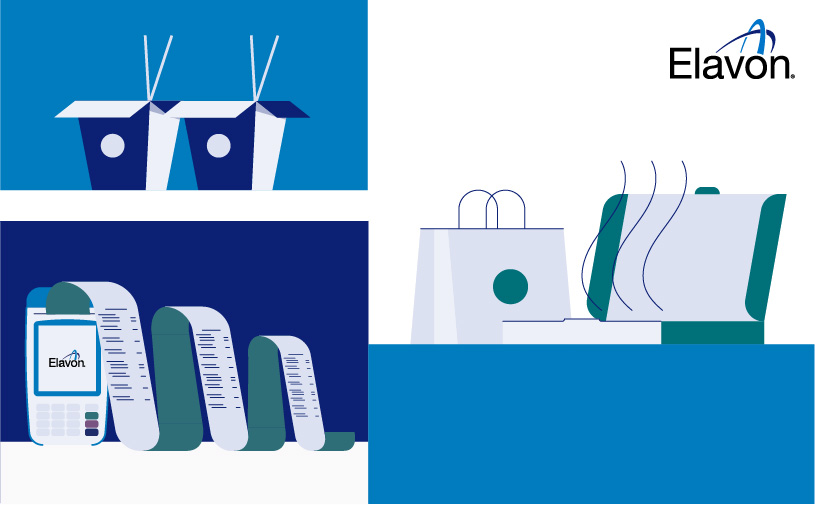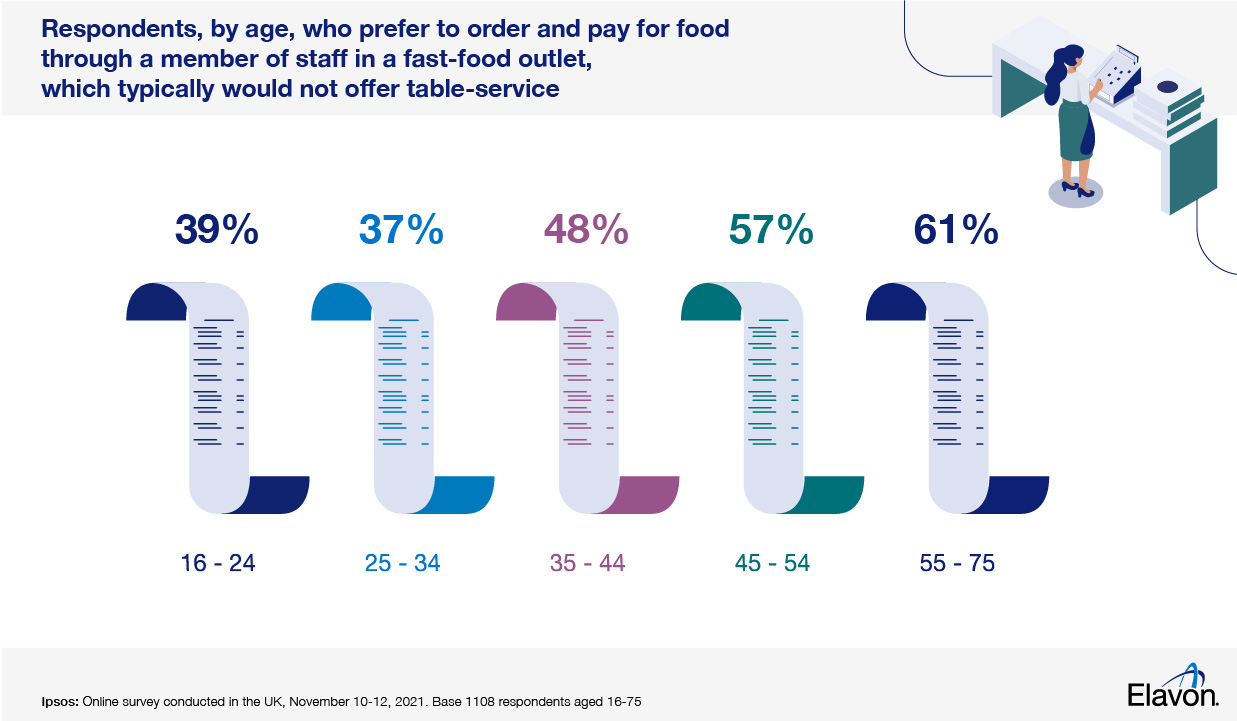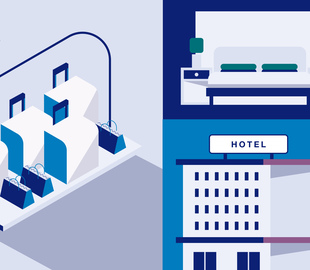
If the speed and convenience of the drive-through defined “fast food” in its early days, it’s the customer use of automated systems that’s having the biggest impact in the 21st century.
It’s no surprise. When people have the option of ordering food online and having it delivered to their front door within 20 minutes, fast food outlets need to be able to compete on speed. Automated ordering and payments systems offering shorter queues and faster service are a logical answer, and are now standard in fast food outlets across the UK.
However, that doesn’t mean customer-facing staff are obsolete. To find out just what proportion of the population still prefer to order and pay through a staff member, we asked 1108 adults, aged 16-75, in the UK between November 10-12, 2021 in an online survey with market researchers Ipsos, and their answers are clear.
Would you like fries with app?
Looking at the overall picture, while about half (51%) of respondents still want to order and pay for their food through a member of staff, just under four in 10 (37%) prefer to use an app or automated system.
“This isn’t surprising,” says David Wheatcroft, Head of European Hospitality.
“The fast food sector was an early adopter of automated order/payment systems and apps. A lot of customers are now used to punching in and customising an order on a screen rather than dictating it to a member of staff,” he says.
“With cash use also in decline, for some people, use of digital payments has eliminated the need to interact with staff altogether.”
The digital divide
When we dig deeper into the preferences of different age groups, it becomes clearer that respondents in the younger age groups are more inclined to use technology to place an order and pay for it rather than doing so at the counter. More than half (51%) of those aged 16-24 prefer this, as do 46% in the 25-34 bracket. That preference declines as the age of the groups increase – a little more than one in 10 (11%) of those aged 55-65 prefer to pay and order using an app or automated system.
Of that same 55-75 group, 61% prefer to order and pay in a fast food outlet through a member of staff, while well over half (57%) aged 45-54 prefer a face-to-face transaction.
“The increased popularity of apps and automated order and payment systems in-store is changing the game. It’s putting the ‘fast’ in ‘fast food’,” says David.
“However, as we found with sit-down dining, it’s important to strike the right balance between meeting the needs of your tech-savvy customers and continuing to offer the traditional face-to-face service many customers still expect.”
“In either instance, it’s vital that the ordering journey is quick and seamless, and payment systems have had to adapt to this meet this requirement.”
“Elavon provides solutions that address exactly this - fully integrated payment systems that complement the ordering experience, which speeds up the process of submitting the initial order, to sending through to the kitchen and receiving your food in the quickest possible time.”
If you want to talk to us about how a modern payments system can benefit your business, talk to our team.
We commissioned this same survey in other countries too, which may interest you:
We asked these same questions to 1000 adults in Ireland and 1098 adults in Poland.
- The research was conducted on i:omnibus, Ipsos MORI’s online Omnibus.
- Online interviews were carried out amongst adults aged 16-75 in the UK.
- Our total respondents base includes 1,108 adults who completed the survey November 10-12, 2021
- The sample obtained is representative of this population, having met quotas on: age, gender, region and workings status.
- The data has been weighted to the known population profile by age within gender, region, education, working status and social grade to be nationally representative and reflect the adult population of the UK.











